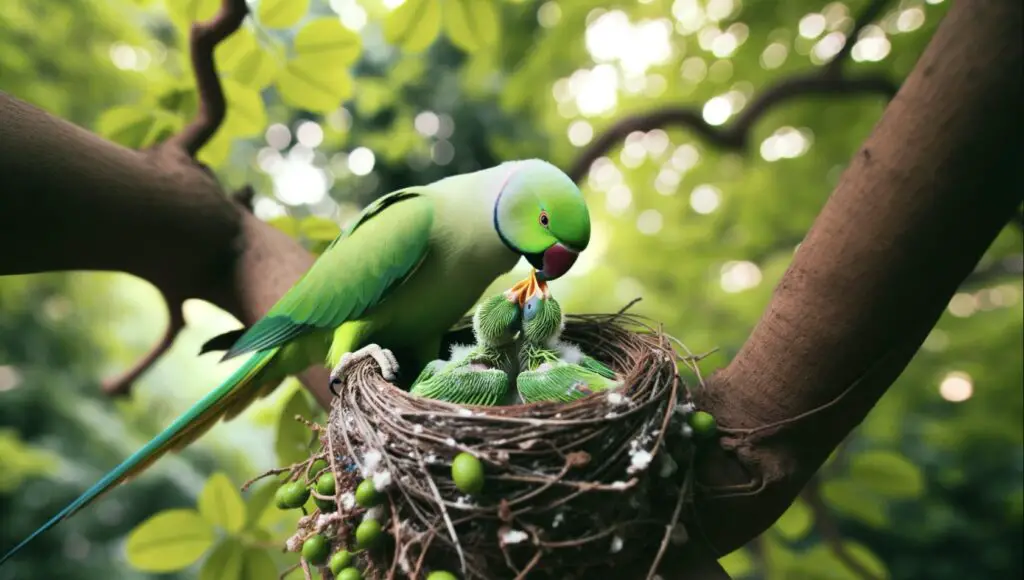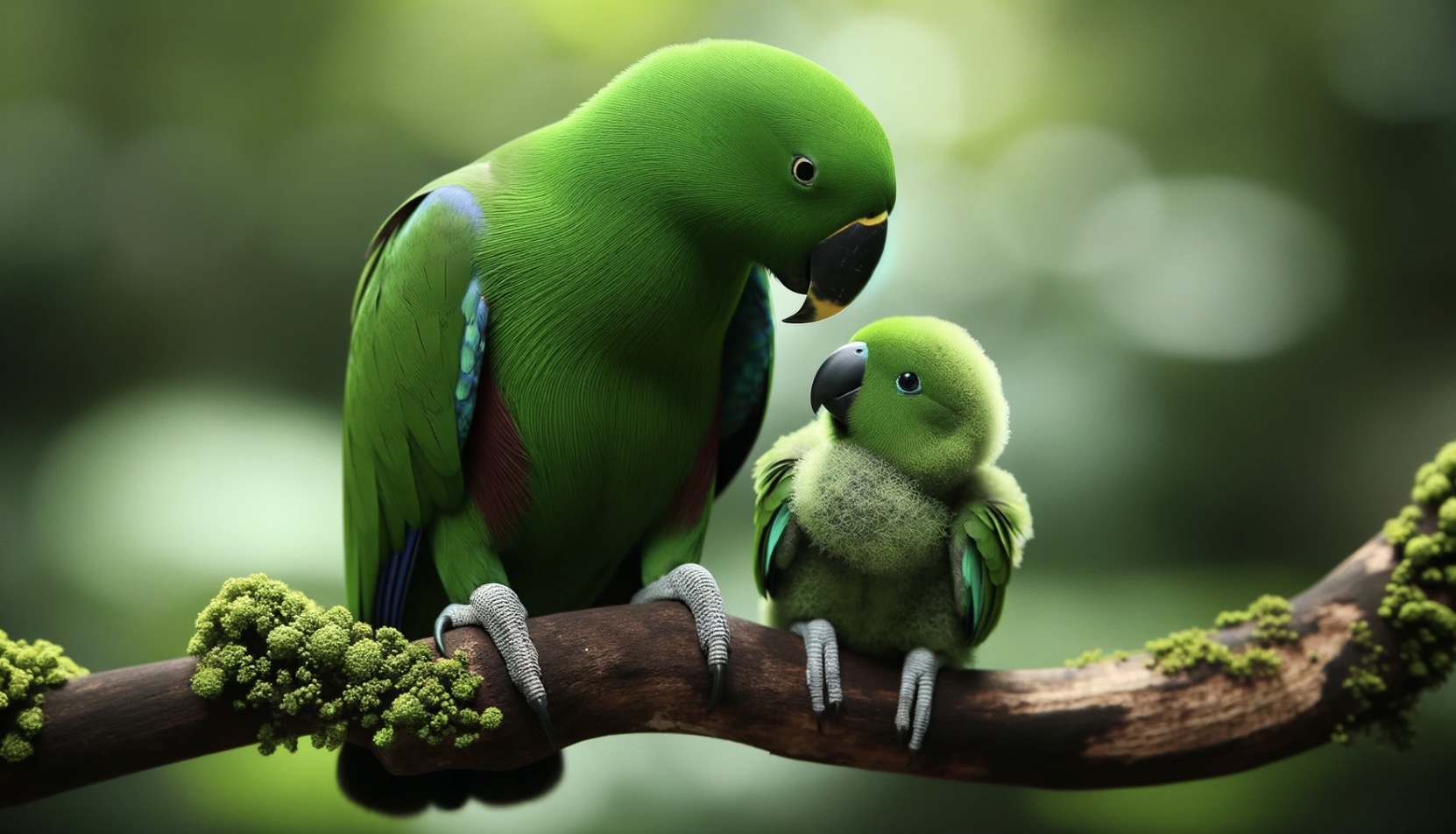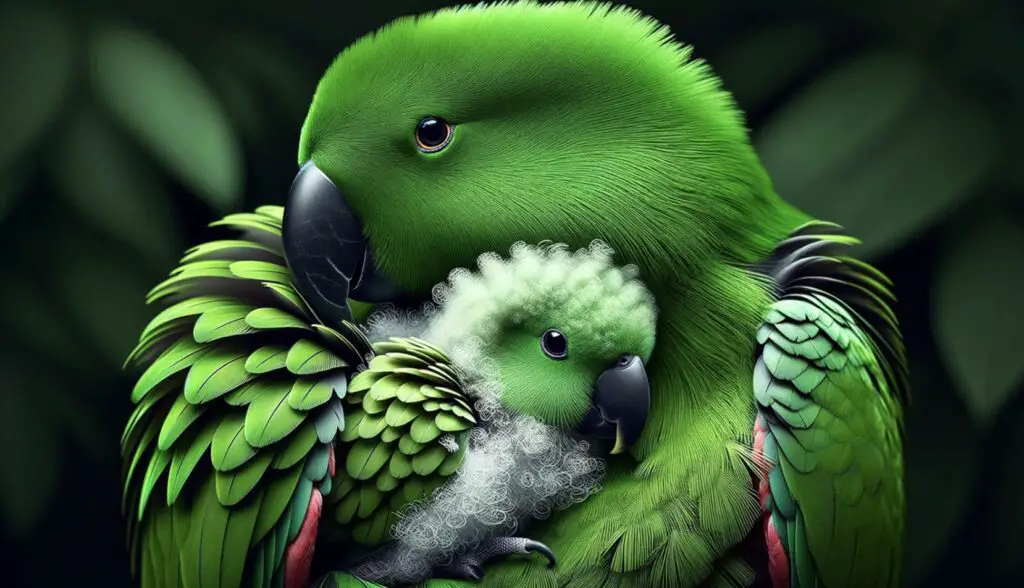As a biologist who has spent considerable time observing parakeets in their natural habitat, this is a question I’ve encountered more than once. Parakeets, with their vibrant colors and melodic voices, are one of the most beloved avian pets worldwide.
However, the world of bird parenting, especially among these captivating creatures, can often surprise and perplex even seasoned bird enthusiasts.
So, to address the elephant (or bird) in the room: Yes, under specific circumstances, some parakeets have been observed killing or neglecting their babies.
According to studies, it’s estimated that approximately 2 to 5% of wild parakeet couples exhibit this behavior annually.
The reasons for this are multifaceted and deeply rooted in survival strategies and natural selection. And we will go through the 4 most common reasons for infanticide in parakeets below:
1. Brood Reduction to Prevent Starvation
Birds, especially those that produce multiple eggs in a clutch, often face the challenge of feeding all their young. In times of food scarcity, some birds, including parakeets, may practice brood reduction. This means that if there isn’t enough food to go around, the parents might allow one or more chicks to die, ensuring the stronger chicks get the nutrients they need.

In such scenarios, it’s typically the weakest or last-hatched chicks that suffer. This behavior may seem brutal from a human perspective, but it’s a strategy that increases the chances of at least some of the offspring surviving to adulthood.
2. Preventing the Spread of Infection
Just as humans prioritize health and hygiene, birds too have strategies to reduce the spread of diseases. If a chick is sick or shows signs of a genetic anomaly, parakeet parents might reject or even kill it to prevent potential infections from spreading to the other chicks.
The Brutal Reality of Protecting the Flock
In the wild, a sick chick could attract predators or harm the flock. By isolating or eliminating the source of illness, parakeets act in the best interest of the majority, even if it means making difficult decisions about individual chicks.
3. Reducing the Breeding Success of Competing Birds
Territorial disputes are common among birds. Sometimes, dominant parakeets might kill the offspring of competitors to reduce the breeding success of rival pairs, ensuring more resources and safer territories for their chicks.

The Strategy Behind Competitive Parenting
This behavior isn’t just about dominance but is a survival strategy. By reducing the number of competitor offspring, dominant pairs can ensure that their lineage has the best chances of thriving in the wild.
4. To Gain Attention from Dominant Males
Mating dynamics among parakeets are intriguing. In certain circumstances, female parakeets might kill their offspring to appear available and attract dominant males. This behavior is particularly prevalent when there’s a high ratio of females to males.
The Unexpected Sacrifice for Mating Privileges
Although it may seem counterintuitive, by sacrificing her current brood, a female can potentially align herself with a stronger mate, increasing the chances of her future offspring’s survival.
The Curious Case of Eclectus Parrots
Eclectus parrots (Eclectus roratus) are a distinct departure from what many envision when thinking of parrot species, particularly in terms of their behavior and reproductive strategies.
Eclectus parrots offer a fascinating contrast to other parrots when it comes to handling (each others!) offspring.

These birds have a unique breeding dynamic, where females are highly competitive, often leading them to kill other females’ offspring. This behavior is not typical of most parakeet species and showcases the diversity of breeding strategies in the avian world.
Comparing Eclectus Behavior to Common Parakeets
Native to the Solomon Islands, New Guinea, northeastern Australia, and the Maluku Islands, their physical and behavioral characteristics are profoundly shaped by their environment.
Most notably, they exhibit sexual dimorphism—a trait where males and females of the same species display different physical characteristics beyond just their reproductive organs.
In the case of the Eclectus, males are a bright emerald green while females are predominantly red and purple. This dramatic difference in coloration makes it easy to distinguish between the sexes, a rarity in the parrot world.
Understanding Their Unique Breeding Dynamics
Eclectus parrots exhibit a matriarchal breeding structure. The females are larger, more dominant, and are responsible for defending their nesting sites.

Due to the scarcity of suitable nesting hollows in their native rainforest habitat, there’s fierce competition among females for these sites.
The unique ecological pressures on these birds have led to some intriguing behaviors:
- Multiple Mates: A single female may mate with multiple males, each of whom will bring her food. This strategy ensures that she has a steady supply of nourishment while she’s incubating her eggs and looking after her chicks.
- Infanticide and Competition: Female Eclectus parrots, due to the intense competition for nesting sites, might kill the chicks of another female, especially if she perceives an opportunity to take over a superior nesting location.
- Long Parenting Period: Eclectus chicks stay with their parents for an extended period, sometimes up to 9 months. This long dependency period is believed to be linked to the complexity of their social structures and the knowledge the chicks need to acquire before independence.
- Dietary Specialization: Unlike many parrots that eat a variety of foods, Eclectus parrots have a specialized diet that primarily consists of fruit. This diet has influenced their reproductive strategy, as males often have to travel long distances to find and bring back the right type of food for their mates and offspring.
The Impact of Human Interference
The unique breeding and behavioral dynamics of the Eclectus parrots have unfortunately made them susceptible to the impacts of human interference.

Deforestation and habitat destruction have reduced the number of available nesting sites, exacerbating the competition among females. Illegal pet trade has also been a concern, with young birds being captured for sale, further straining their populations in the wild.
In conclusion, while the Eclectus parrot showcases a different spectrum of avian parenting and breeding strategies, it’s crucial to understand and respect their unique behaviors. Their story serves as a reminder of the incredible diversity of the natural world and the delicate balance that exists within it.
In summary
With their vividly distinct sexual dimorphism and matriarchal breeding structures, Eclectus parrots turn the typical parakeet breeding narrative on its head. While infanticide is more common in this species, it serves as a testament to the myriad ways birds have adapted to ensure their survival.
Conclusion: The Delicate Balance of Nature
Nature’s balance is delicate, and what might seem cruel or unusual to us is often a survival strategy honed over millennia. Parakeets, with their vivid colors and sociable nature, have complex behaviors that reflect their need to adapt, survive, and thrive in the wild. Understanding these behaviors helps us appreciate the intricacies of nature and the sacrifices animals make in the name of survival.




